Weber Haus is an increasingly big name in the cachaça community. It’s one of the few so-called artisanal cachaças that I can find at supermarkets such as Pão de Açúcar. With a burgeoning reputation, I was excited, that first day of travel, to visit the distillery to learn more about where they came from, where they are currently, and where they see themselves going in the near future.
The parking lot was empty in the middle of the afternoon. The hot sun, perched in a cloudless blue sky, beat down on the cobbelstone parking lot. I managed to find a space in the shade of the main building. A large tank with an image of a newly released cachaça blend emblazoned on its side towered over me as I got out of the car.
I found my way into the Weber Haus store, a large, impressive space filled with brown, hard wood. In the middle of the room was another brown wood shelf filled exclusively with the different cachaças the brand produces. Along the far wall, there were liquers of various flavors and other products such as rum and gin. To the left was a bar where, I presumed correctly, one could sample the various wares Weber Haus had to offer.
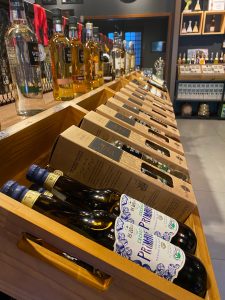
A cachaça lover’s dream
The store was empty. I padded around, examining everything, hoping that I hadn’t appeared at an inopportune time. Maybe there was a staff meeting. Despite the fact that I’d communicated with someone from the distillery, and told them I was coming, I hadn’t given them an exact time. Uh-oh.
A few moments later two other visitors appeared. And then in an instant, a representative of Weber Haus emerged wearing a branded shirt, and assured me that someone would help me in a moment.
Marcelo greeted me with an offer to take a tour of the facility and learn more. I’d communicated with a Marcelo earlier in the week and presumed it was one in the same, though I’d soon learn it wasn’t.
We began with the history. In the 1840s, the Webers and 47 other families came from Germany and settled in Rio Grande do Sul. The family had experience with distilled spirits. They’d been known in the old country as purveyors of a certain kind of potato-based spirit, which I believe is called Kartoffelschnapps.
Without access to potatoes, the family discovered that their skills could be used to produce other spirits, namely cachaça. For nearly 100 years, the family produced cachaça, selling its product by going door to door. During that time, they did not bottle the liquor. Instead, they wheeled around a large barrel filled with cachaça, allowing purchasers to fill their own containers.
In the 1940s, that changed. The family, with a new generation in charge, began bottling its product, selling it under the name Primavera (Spring). This lasted until the 1970s when they reclaimed the family name and ushered in the modern era of Weber Haus. More modern equipment and techniques emerged, though the traditional copper alembic still remained part of the process, even up until today.
We moved from the history lesson to a look at the creation process, though at this time of year, they do not produce cachaça, and then on to the area where certain cachaças are aged in barrels. For those who have toured a distillery or a vineyard and been to the area where the products are stored, you will get what I say when I mention that the smell of that place was divine. It smelled like sugar (but without the sweetness) and liquor and wood. But I could also sense the value of time, if that makes sense. To produce an aged spirit, one needs patience, and it was evident at Weber Haus. The heavy barrels of various shades of brown, depending on the type of wood, rested silently while I snapped pictures.
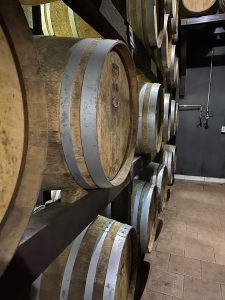
Oak barrels at Weber Haus
What impressed me the most, despite never having tasted it at the time, was the 7-wood blend that the brand had recently released. What’s a 7-wod blend? Well, it means that the same quality silver or prata cachaça, is aged in seven barrels made of seven different types of wood. The aged cachaça, removed from these seven, separate barrels, is then blended together. I asked my guide whether this was the only distilled spirit in the world to have such diversity. He didn’t have an answer, and I still haven’t gotten one, but my bet is that it is.
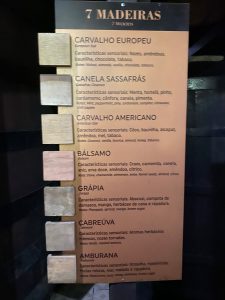
Seven different types of wood
We returned to the store, and I would soon get to taste that 7-wood blend, but first I met the other Marcelo with whom I’d been communicating. As the director of sales, he had particularly keen insight into cachaça in general and prospects for US consumption, in particular.
I learned that Weber Haus produces cachaça for Fogo de Chão, the major churrascaria chain with locations in Brazil and the US. They also produce cachaça for others who use their own brand to sell the product.
I asked Marcelo what the toughest part about the US market is. He noted that it’s simply that Americans don’t have the chance to taste quality cachaça. While there are a number of industrially produced cachaças on the market, few small distilleries have made it. Marcelo said, and I agreed, that if Americans had exposure to quality cachaça, the market would open up.
There is little competition in the US as there is here in Brazil. Marcelo argued that there is great value in having multiple great distilleries competing against one another, offering their best to the public. He praised a few of his competitors, saying that without them, Weber Haus wouldn’t be where it is today.
After our discussion, we snapped some pictures, and I managed to sample the 7-wood cachaça, and even decided to purchase a bottle. I left the distillery feeling good about my experience and excited about the days to come, exploring more about the connections between these producers and the cachaça community.
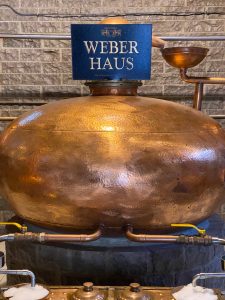
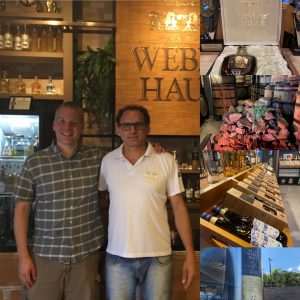



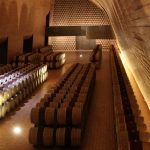
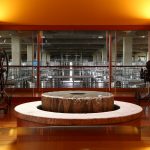
Leave a Reply